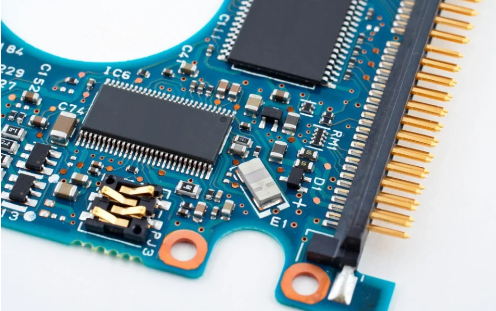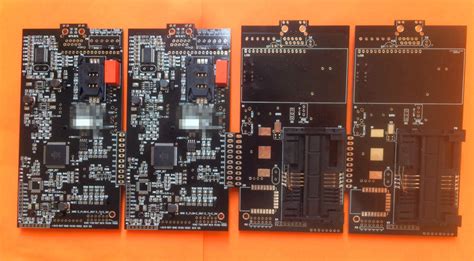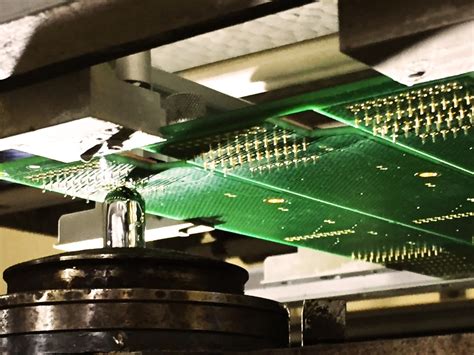Top Circuit Board Assembly Companies Driving Innovation Today
Key Takeaways
The circuit board assembly industry stands as a cornerstone of modern electronics, with pcb assembly companies leading the charge towards innovation and efficiency. These companies are not only streamlining production processes but are also actively integrating advanced technologies into their workflows. The adoption of pcba methodologies, such as automated assembly and digital inspection systems, is enhancing quality control and reducing lead times. Furthermore, many firms are embracing sustainable practices in their operations to meet growing environmental standards and consumer demands for greener products. This transformation is indicative of a broader trend where circuit board assembly is evolving to support more complex electronic devices while maintaining cost-effectiveness and scalability. Ultimately, the ongoing innovations within this sector are crucial for driving forward the narrative of electronics design, ensuring that the future remains bright for both manufacturers and consumers alike.
Introduction to Circuit Board Assembly Companies
In today’s fast-paced technological landscape, circuit board assembly companies play a pivotal role in the development of modern electronics. These firms specialize in pcb assembly, ensuring that various electronic components are accurately mounted and soldered onto printed circuit boards (PCBs). The pcba process is integral to the production of a wide range of devices, from everyday consumer electronics to complex industrial machinery.
As the demand for more sophisticated electronic devices increases, so does the need for innovative approaches in pcb assembly. Many companies are now investing heavily in automation and robotics, which significantly enhance production efficiency and accuracy. By adopting state-of-the-art technologies such as surface mount technology (SMT) and advanced inspection systems, these companies are not only increasing their output but also minimizing the risk of defects during the assembly process.
Moreover, collaboration among key players is becoming key to driving advancements in circuit board technology. Firms that emphasize innovation often share their insights and experiences to bolster industry-wide progress. As a result, they create robust partnerships focused on improving not only individual production lines but also setting industry standards that elevate overall quality.
“Embracing technology in circuit board assembly not only enhances productivity but also paves the way for groundbreaking innovations that define our electronic future.”
This proactive engagement not only supports industry growth but assures confidence among consumers regarding product reliability. Above all, as sustainability continues to gain traction across sectors, many leading circuit board assembly companies are adopting greener practices to ensure that their operations have a minimal environmental footprint while continuing to deliver high-quality pcba solutions.
Key Players in the Circuit Board Assembly Industry
The circuit board assembly industry is home to several key players whose contributions have significantly shaped modern electronics. Leading companies in this sector are known for their expertise in PCB assembly and their commitment to quality and innovation. These firms leverage advanced technologies to provide high-quality PCBA solutions, ensuring that client specifications and industry standards are met. Industry leaders are also continuously investing in research and development, allowing them to implement new methodologies that enhance production efficiency. Notably, they focus on the integration of automation and smart technologies into their processes, which facilitates rapid assembly cycles without compromising on quality. Furthermore, these companies often collaborate with design engineers to create prototype assemblies faster than ever before, demonstrating their essential role not only in production but also in the design phase of electronics manufacturing. As a result, they drive innovation across various applications—including consumer electronics, telecommunications, and automotive sectors—placing themselves at the forefront of a rapidly evolving technological landscape.
Innovations in Production Efficiency and Technology
The circuit board assembly industry has witnessed profound transformations aimed at enhancing production efficiency and integrating cutting-edge technologies. Companies specializing in pcb assembly are now leveraging automation and advanced machinery to streamline their processes, resulting in faster turnaround times and reduced operational costs. For example, the adoption of robotic systems for repetitive tasks has minimized human errors while maximizing precision and consistency in assembly. Furthermore, digital technologies such as the Internet of Things (IoT) enable real-time monitoring of production lines, allowing for immediate adjustments to maintain optimal performance. This integration not only boosts productivity but also paves the way for more sophisticated designs and functionalities within the pcba landscape. As a result, these innovations are not just improving processes but are also driving the development of complex electronic devices that meet the ever-evolving demands of consumers. By prioritizing efficiency and technology, leading circuit board assembly companies are setting new standards and enhancing their competitive edge in a rapidly changing market.
Adoption of Advanced Manufacturing Techniques
The pcb assembly process has undergone a remarkable transformation in recent years, primarily due to the adoption of advanced manufacturing techniques. Leading circuit board assembly companies are harnessing the power of automation, robotics, and artificial intelligence to streamline their production lines. These innovations not only enhance production efficiency but also improve quality control and reduce waste. For example, automated soldering machines and pick-and-place robots can significantly accelerate the assembly process while maintaining precision and consistency in pcba outputs. Moreover, advanced software tools are being integrated into the manufacturing workflow, enabling real-time monitoring and predictive maintenance. Such proactive measures lead to lower equipment downtime and increased throughput. These advancements ensure that companies can meet growing demands for more complex circuit board designs without compromising on quality or performance. In addition, the shift towards more sophisticated techniques paves the way for innovative product development within the electronics industry, ultimately shaping a more resilient tech landscape for the future. The ongoing evolution in manufacturing methodologies reflects a commitment to excellence among pcb assembly leaders, making them pivotal players in driving technological progress forward.
The Role of Sustainability in Circuit Board Assembly
In today’s electronics landscape, sustainability has become a pivotal focus for circuit board assembly (PCB assembly) companies striving to minimize their environmental impact while enhancing operational efficiency. The shift towards eco-friendly practices in the PCBA industry is driven by both consumer demand and regulatory requirements, leading companies to reevaluate their production processes. Many industry leaders are now adopting sustainable materials, such as biodegradable substrates and low-impact solders, which play a critical role in reducing waste and energy consumption. Furthermore, innovations in circuit board assembly processes incorporate advanced techniques like automation and selective soldering, which not only boost productivity but also contribute to less material waste. By harnessing technologies such as additive manufacturing and recycling programs, companies are setting new benchmarks for environmental stewardship in the electronic manufacturing sector. As these practices take root, they not only position PCB assembly providers as responsible corporate citizens but also enhance their competitiveness in a market increasingly favoring sustainability. Thus, the integration of eco-friendly strategies into the PCBA process will undeniably shape the future of electronics innovation while fostering a greener planet.
Case Studies: Success Stories of Leading Companies
In the rapidly evolving world of electronics, several companies stand out as pioneers in pcb assembly and pcba processes, showcasing remarkable success stories that redefine industry standards. One notable example is Company A, which leveraged state-of-the-art robotics and AI-driven systems to enhance its pcb assembly efficiency. By automating intricate tasks, they reduced production time by 30%, allowing for faster time-to-market for their clients’ products. Additionally, Company B has successfully integrated advanced manufacturing techniques, enabling them to provide highly customizable pcba solutions that cater to niche markets. Their innovative approach not only attracts diverse clientele but also demonstrates how adaptability can serve as a key driver of growth.
Furthermore, Company C emphasizes sustainability by implementing eco-friendly practices throughout its production line, ultimately setting a benchmark for responsible manufacturing in the industry. Their commitment to reducing electronic waste and utilizing recyclable materials in pcb assembly processes has resonated well with environmentally conscious consumers and businesses alike. These case studies illustrate a broader trend within the circuit board assembly sector: an unwavering commitment to leveraging cutting-edge technologies while prioritizing efficiency and sustainability. As these companies continue to push boundaries and innovate, they inspire others in the industry to follow suit, shaping a brighter future for electronics as a whole.
Future Trends in Circuit Board Technology and Design
As the electronics industry continues to evolve, significant trends in circuit board technology and design are emerging. One of the most notable movements is the integration of smart technology within the pcb assembly process. This includes the use of advanced software simulations and automated pcba testing protocols, which enhance accuracy and reduce production time. Companies are also focusing on miniaturization, designing more compact circuit boards without compromising on performance. This trend is driven by the growing demand for smaller, more powerful electronic devices. Additionally, the application of multi-layered circuits is becoming increasingly common, allowing for greater functionality within a limited space—key for supporting complex electronic systems used in fields such as telecommunications and healthcare.
Sustainability is another critical factor influencing future designs in circuit board assembly. Manufacturers are adopting eco-friendly materials and processes, striving to minimize their environmental impact while maintaining high standards of quality and performance. Furthermore, innovations such as flexible PCBs offer enhanced versatility in product design, enabling devices to be lighter and more adaptable to various applications.
In conclusion, the future of circuit board technology lies in a blend of innovation, sustainability, and adaptability that will redefine how electronic systems are designed and assembled. As these trends continue to take shape, they promise to lead to even greater advancements within the electronics landscape.
Conclusion: The Impact of Circuit Board Assembly on Electronics Innovation
The world of electronics has undergone a transformative journey, largely driven by the advancements in pcb assembly and the emergence of innovative circuit board assembly companies. These companies are not only pivotal in enhancing production efficiency but also in adopting sophisticated technologies that reshape how electronic devices are conceived and manufactured. Through the implementation of state-of-the-art processes, pcba providers are optimizing designs, streamlining workflows, and minimizing waste, which allows for faster time-to-market for new devices. The synergy between technology and manufacturing has led to remarkable improvements in product performance and reliability. As these organizations prioritize sustainability alongside innovation, they are developing eco-friendly solutions that further push the boundaries of electronic capabilities. The insights gained from the success stories of leading players in this field illustrate how pcb assembly serves as a backbone for future technological advancements, ensuring that the electronics industry remains at the forefront of innovation and efficiency.
Conclusion: The Impact of Circuit Board Assembly on Electronics Innovation
In the ever-evolving landscape of technology, pcb assembly stands as a cornerstone that fuels innovation across various sectors. The advancements in pcba are not merely about producing components; they symbolize a fusion of creativity and engineering that drives the electronics industry forward. By streamlining production processes and adopting cutting-edge technologies, these companies enable faster turnaround times, reduced costs, and enhanced product quality. Furthermore, the integration of advanced manufacturing techniques—including automation and robotics—has transformed traditional methods into highly efficient systems that support scalability. As sustainability becomes increasingly crucial, these organizations also lead efforts in adopting environmentally friendly practices within their operations, thus reflecting a commitment to not only technological advancement but also corporate responsibility. Ultimately, the collective impact of these pioneering circuit board assembly companies shapes the future of electronics, fostering an environment ripe for continued innovation and excellence in design. The commitment to enhancing production efficiency while navigating sustainability challenges ensures that the industry remains adaptable to future trends and consumer demands.
FAQs
What is PCB assembly?
PCB assembly, commonly referred to as PCBA, is the process of connecting electronic components to a printed circuit board (PCB) to create a functional electronic device. This process involves various techniques, including surface mount technology (SMT) and through-hole technology.
Why is production efficiency important in PCB assembly?
Production efficiency in pcb assembly is crucial because it reduces costs and time while enhancing product quality. Companies that focus on improving their manufacturing processes can deliver products faster, respond more effectively to market demands, and maintain competitive pricing.
What advanced manufacturing techniques are used in PCBA?
Leading circuit board assembly companies utilize advanced techniques such as robotic automation, advanced soldering methods, and real-time quality control systems. These technologies not only improve production rates but also minimize the risk of defects, ensuring high-quality assemblies.
How are sustainability practices integrated into PCB assembly?
Sustainability practices in pcb assembly involve adopting eco-friendly materials, reducing waste during manufacturing, and implementing energy-efficient processes. These initiatives help companies reduce their carbon footprint while meeting increasing consumer demand for greener products.
What future trends can we expect in circuit board technology?
The future of circuit board technology includes trends such as increased miniaturization of components, greater integration of IoT devices, and advancements in materials designed for high-performance applications. These trends will reshape the design and functionality of electronics.







